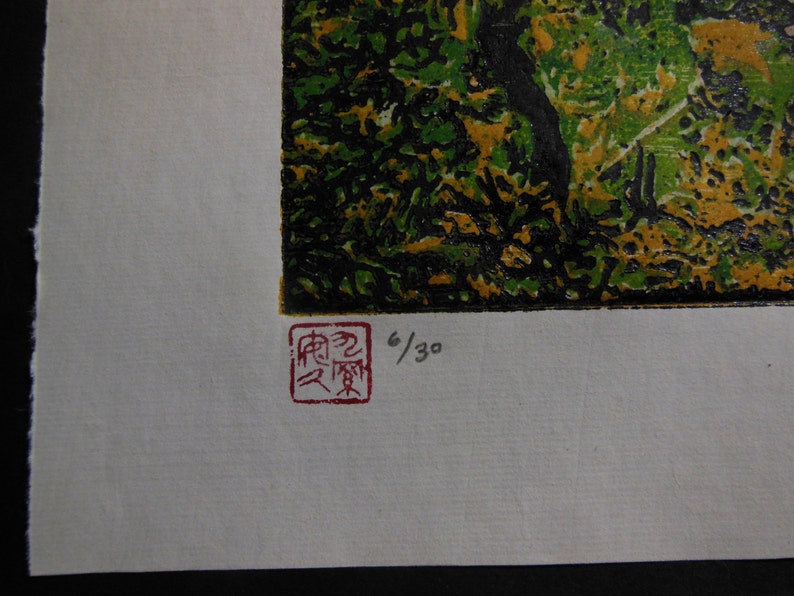

This was due to the fact that the print was a very complex and sophisticated because of its use of symbolic imagery, line, and complexity of the composition. Something interesting about the print is that it provided some clues that supported the thought that the Chinese had much earlier experience with process than previously believed. but wasn’t discovered until 1907 in a cave (Hind,- A, B1, P6). The 17-foot Diamond Sutra Scroll by Wang Chieh was printed in 868 A.D. In contrast to Egyptian textile printing and the prints of the Buddhist’s, the earliest dated woodblock print with an image originated in Turkestan, China. After the Chinese prints, the first authentic, rubbed Buddhist woodblock prints were known to have originated in Japan from 746 to 770 A.D. The importance of multiples was a result of the Buddhist’s devotion to the Sanskrit formulae and charms (Hind, A, B1, P64). The printing of multiples was not as important or well established before the sixth century as it is today, but that completely changed with the introduction of Tantric Buddhism. This “new” form of printing was possible as a result of the wide availability of hand-made paper, which the Chinese had invented in 105 A.D. During this time woodblock printing was also introduced into China where the first prints were made on paper. The woodblock printing process was further developed in Egypt in the sixth and seventh century A.D., which at the time was printed on textiles. The Sumerian relief impressions were unique because they were “printed” on clay as opposed to those of later centuries, which were printed on paper. Relief printmaking was believed to have originated in China but the first actual known use of relief printing predates any form of woodblock printing to about 4000 B.C. One of the most significant relief processes to be developed is the woodcut printing process.Īs well-known as it is in the printmaking community, woodblock printing did not just come into existence but instead it was developed through other relief printing processes.


Each of the processes is used because it possesses a unique look and style, which differs from the others. Every single one of these printing processes was developed throughout many decades before it reached the point at which it can be used today. Some of the different relief processes that are used today include letterpress, woodcuts/ woodblock, wood engravings, and linocuts. On the other hand, the areas that were carved out will remain as negative space where the paper will show through. When inked the area on the block that was not carved out will receive the ink and will print as a positive shape. In the European process known as the Woodcut process, the ink is rolled on the block with a brayer while in the Japanese process known as the Moku Hanga process, the water-based pigments are added to the wood and then brushed with bake brushes. After all the negative space has been carved out, the block is inked according to the style desired which can include oil-based inks (European process) or water-based pigments (Japanese process). The negative areas of the drawing (white areas) are then carved out with gouges. In most cases this is done by transferring an image onto a printing block such as a piece of wood or linoleum and redrawing the image on the block so that it is as close in appearance to the finished piece. The printing process’ greatest development took place in the 15th and 16th century in Europe and in the 18th and 19th century in Japan which can be seen through a comparison and contrast of the style, technique, and use of color in the prints from two well-known artists from key regions in these countries.įor those who are not aware, Relief printing is a printmaking process in which the image area that is transferred on paper is the area on the highest level of the printing block. The process was developed independently in many parts of the world with minor cases of direct influence between different areas. Woodblock printing is one of many Relief printmaking processes that have developed for thousands of years.


 0 kommentar(er)
0 kommentar(er)
